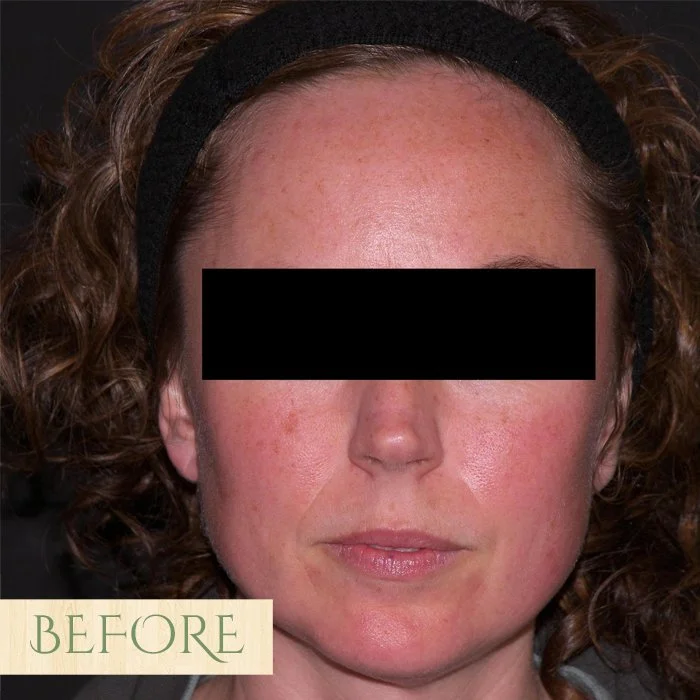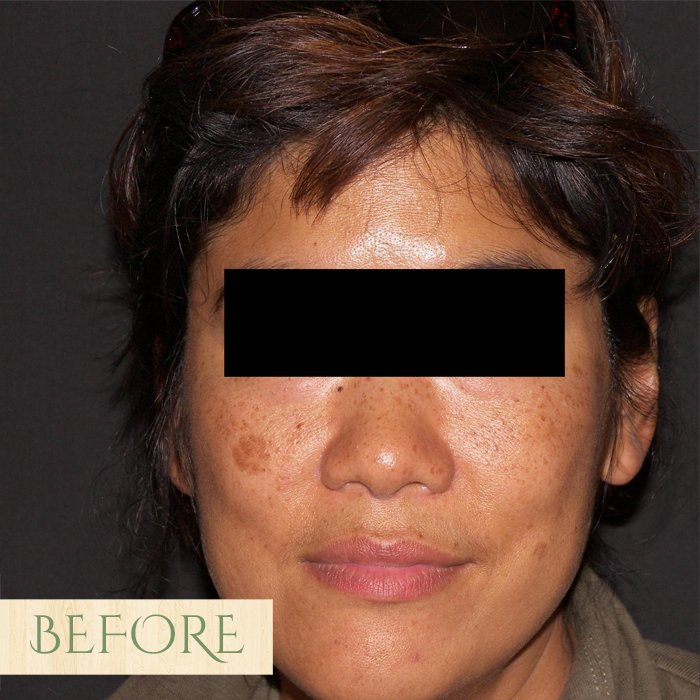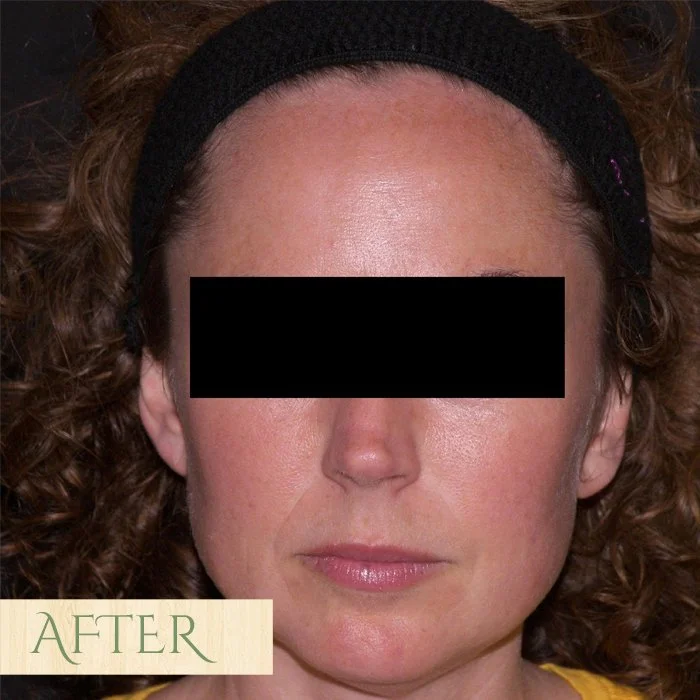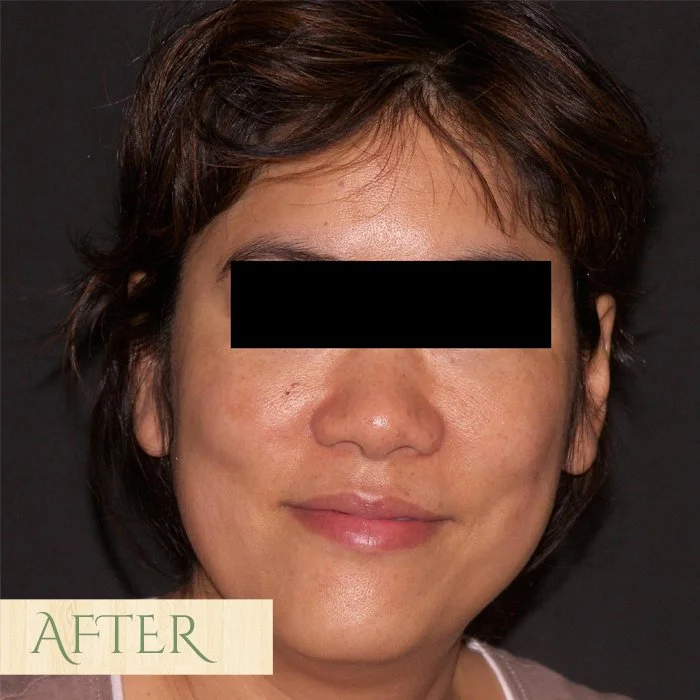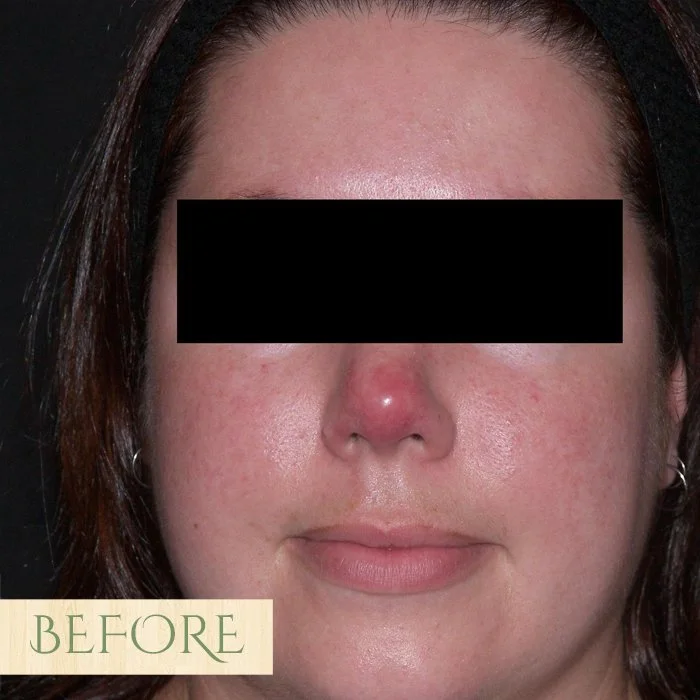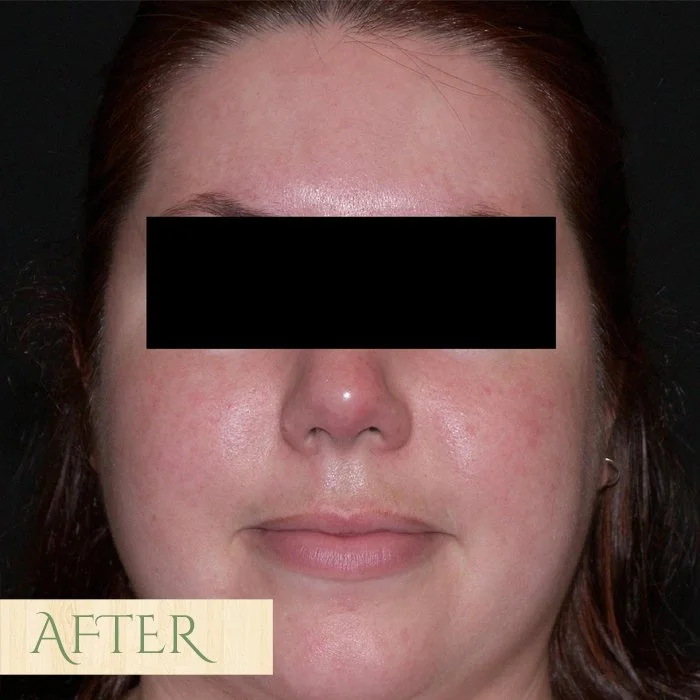
Laser Facial Treatments
Intense Pulsed Light Details
Imagine a more youthful looking you. Both the pleasures and stresses of life, along with the simple passage of time, tend to cause our skin to appear older. The signs of aging and sun damage are typically most visible on a person’s face. While numerous treatments from simple creams to major surgeries exist to improve various facial flaws, skin specialists have always sought dramatic improvement with low risk and no “downtime.” Additionally, many conventional treatment options can only address one condition at a time, while they entail a prolonged recovery time, considerable pain and potential side effects. Intense Pulsed Light, commonly known as IPL, is one of the most popular treatments at San Francisco Aesthetics. It is a non-invasive treatment that erases skin damage without disruption of the skin’s surface, hence, no” downtime.” IPL can simultaneously treat a wide range of facial concerns safely and effectively, such as broken capillaries, skin discoloration, age spots, freckles, mottled pigmentation and the symptoms of rosacea.
How It Works
IPL is most often performed on the face, neck, chest, and hands to erase the signs of aging. Our lasers are clinically shown to reduce wrinkles and improve the tone of the skin by non-invasively stimulating new collagen production.
What can I expect after an IPL treatment at SF Aesthetics?
After an IPL treatment for sun damage, your freckles will turn dark and scab over. Imagine having a dusting of coffee grinds on your face. Over the course of seven to ten days, the scabs will flake off, revealing a more even complexion. The types of responses heard from patients are that they feel like their skin is lifted. There is a decrease in pore size, the skin feels tighter, looks brighter, and there is a reduction in fine lines and wrinkles. By combining IPL and Laser Genesis at San Francisco Aesthetics, we take care of noticeable coloration defects and also provide the skin with the toning and textural improvement that patients are seeking. Non-invasive techniques for skin rejuvenation are being quickly established as a new standard in the treatment of mild wrinkles and overall skin toning. All patients show improvement after the treatment series.
Laser facial treatments Before & After Photos
Rosacea
Hyperpigmentation
Melasma
Melasma
Melasma
Post Treatment
Post Treatment
Post Treatment - Tranexamic Acid
Post Treatment - Tranexamic Acid
Post Treatment - Tranexamic Acid

Rosacea Details
Rosacea is a common condition of an unknown cause affecting the facial skin. It typically first appears when people reach their thirties to forties and manifests itself as a flushing or redness on the cheeks, nose, chin and forehead that initially comes and goes. If left untreated, the condition can worsen over time, resulting in more persistent redness. Laser treatments performed at San Francisco Aesthetics such as Laser Genesis or IPL can improve the unsightly symptoms of Rosacea. Rosacea is a disorder of the face that results in redness, prominent blood vessels, swelling of pores, and skin eruptions similar to acne. Also called “adult acne”, the cause of rosacea is unknown. It occurs most often in fair skinned people, particularly those who blush easily. Women are more commonly affected, although men are more severely affected. Symptoms usually begin to appear between ages 30 to 50, and the disorder is most often seen in middle-aged or older people. Bumps and pimples appear and small dilated blood vessels may become visible. Conventional treatment for Rosacea is with antibiotics, combined with topical creams or lotions. Also, the use of a low concentration glycolic facial wash has been proven to be helpful. The signs of Rosacea are:
redness of the face or cheeks similar to a rash
a tendency to flush or blush easily
increased vascularity (broken capillaries) of the face
a red, often enlarged nose
acne-like skin eruptions
a burning or stinging sensation of the face
While Rosacea cannot be cured, its symptoms can be controlled and your appearance can be improved. The best way to control Rosacea is to avoid the triggering events such as prolonged periods of sun exposure, nicotine, caffeine, and alcohol. Heat and rich foods can also contribute to the effects of rosacea. While topical creams may help control rosacea, the best way to improve your appearance is with light-based treatments such as laser. Treatments must be individualized depending on the severity of your condition and the symptoms you want treated. Dr. Tsai performs all of the laser treatments at San Francisco Aesthetics and she will design a treatment plan to meet your needs. The redness, broken capillaries, and enlarged blood vessels can often be reduced in only a few visits.

MELASMA Details
What is melasma?
Melasma is a skin condition that causes patches and spots, usually on the face, which are darker than your natural skin tone. While common, melasma can be mistaken for another skin condition. Board-certified dermatologists have the expertise required to give you an accurate diagnosis and individualized treatment plan. Is melasma contagious? No
Melasma is most common in women
Many women first see these blotchy patches and freckle-like spots on their face during pregnancy or when they start taking birth control pills. Melasma is so common during pregnancy that it’s sometimes called the “mask of pregnancy.”
For some women, the melasma goes away after their baby is born or they stop taking birth control pills.
Women who have medium to dark skin tones are most likely to develop melasma. When melasma appears, it can cause tan, brown, grayish brown, or bluish gray patches and freckle-like spots. These usually appear on certain areas of face like the cheeks, forehead, chin, and even above the upper lip. While less common, melasma can develop on the arms, neck, or elsewhere.
What can get rid of melasma?
While melasma may go away on its own, this skin condition can also last for years. If you dislike the discoloration on your skin caused by melasma certain treatments can sometimes help.
However, if you are pregnant, wait until you have your baby to treat melasma. If you use a melasma treatment that you can buy without a prescription, it can be difficult to know whether it’s safe to use during pregnancy. Also, melasma may improve and sometimes even go away after you give birth.
Is there a cure for melasma?
Treatments such as creams can help fade the discoloration, but treatments cannot make melasma go away forever. This skin condition can come back. It's common for melasma to return when you spend time outdoors without protecting your skin from the sun.
In fact, many people who have melasma say the dark spots and patches become more noticeable during the summer and fade in winter. For this reason, it is important to use sunscreen every day and wear a wide-brimmed hat to keep the spots from getting darker or returning.
Is melasma a type of cancer?
No, melasma is not a type of cancer. It’s also not a sign of skin cancer. Melasma differs from skin cancer in that it typically feels flat and appears on both sides of your face.
Where does melasma develop on the body?
Melasma primarily develops on the face, usually on one or more of the following areas:
Cheeks
Chin
Forehead
Nose
Above the upper lip
Occasionally, people develop melasma on their jawline, neck, arms, or elsewhere.
Wherever melasma appears, it causes blotchy patches and spots that can look like freckles. The color varies with a person’s skin tone and the severity of the melasma. In general, melasma is slightly darker than your natural skin color. Most people see various shades of brown. Melasma can look bluish gray in people with darker skin tones.
What are the signs and symptoms of melasma?
Melasma causes patches and spots that are darker than your natural skin color. Melasma develops on both sides of the face. If you have melasma on your cheeks, you’ll see patches or spots on both cheeks. Melasma can cover a large area. The unevenly shaped patches of melasma can join together, creating one or more large areas of melasma. Melasma can be more noticeable in one area than another. Melasma can appear on the sides of the face. People with a light skin tone can develop melasma. Melasma becomes more noticeable when you spend time in the sun. While less common, melasma can develop on the arms. Regardless of where melasma appears on your skin, it tends to become more noticeable when you spend time in the sun. Protecting your skin from the sun can help fade dark patches and spots. Men develop melasma. While melasma primarily affects women, some men develop melasma in common places like cheeks, chin, forehead, and upper lip.
Melasma isn’t painful or itchy.
While this skin condition can be noticeable, you won’t feel anything on your skin. Melasma won’t make your skin itch or cause pain.
While your skin doesn’t feel different, melasma can take a toll on your emotions. Having melasma makes some people feel self-conscious. Studies show melasma can lower self-esteem because it affects your appearance.
If you dislike the way melasma looks, treatment can help. Any treatment plan for melasma will include sun protection. That’s because the sun’s rays play a role in causing melasma.
What causes melasma?
More research is needed to fully answer this question. Researchers have discovered that when someone has melasma, the cells that give skin its color (melanocytes) tend to be more active. Exactly why this happens isn’t well understood.
It may be that melasma develops when something triggers these skin cells, causing them to go into overdrive.
The list of possible melasma triggers includes:
Sunlight: When sunlight hits our skin, it triggers the body to produce more melanin. This seems to explain why melasma develops on skin that gets the most sunlight like skin on the face, neck, and arms.
Pregnancy: An increase in the hormones estrogen and progesterone, which occurs during pregnancy, is thought to trigger melasma.
Some medications: The following medications may trigger melasma in some people:
Anti-seizure medications
Birth control pills (also known as oral contraceptive pills)
Medications that make your skin more sensitive to sunlight (includes retinoids, some antibiotics, and some blood pressure medications)
Stress: While this is controversial, some research findings suggest that stress can trigger melasma. Stress causes the body to make more of the hormone cortisol. An increase in cortisol may trigger melasma.
Tanning beds: A tanning bed or sunlamp tends to produce stronger ultraviolet (UV) rays than sunlight. When you expose your skin to UV light, it triggers the body to produce more pigment. Sometimes, this pigment appears unevenly, causing the blotchy patches and freckle-like spots of melasma.
Thyroid disease: Your thyroid is a gland located in your neck. It makes hormones that help your body with important jobs, including breaking down food you’ve eaten and regulating how fast your heart beats. If your thyroid gland develops a problem, this may increase your risk of developing melasma. Sometimes, treating the thyroid problem clears up the melasma.
Some people have a greater risk of developing melasma
Why a trigger causes melasma in some people but not others isn’t entirely clear. We do know that some people have a higher risk of developing melasma. You have a greater risk if you:
Are a woman between the ages of 20 and 40: Melasma is much more common in women than men. Hormones seem to play a role in causing melasma.
Have a medium or dark skin tone: Melasma develops more frequently in these skin tones than in lighter skin tones. You’re more likely to develop melasma if you are a woman of Latin, Asian, Black, or Native American heritage.
Have a blood relative who has melasma: Several studies have found that patients with melasma often have one or more blood relative(s) who also had melasma.
In one study of 324 melasma patients around the globe, 48% reported that they have a blood relative with melasma. Other studies have reported similar numbers.
If something is triggering melasma, it may clear on its own. This often happens after a person gives birth or stops taking a medication that triggers the melasma.
Sometimes, melasma stays around for years. If melasma bothers you, a dermatologist can talk with you about treatment options. Many treatment advances have been made in recent years.
Laser Genesis
Laser Genesis from Cutera is a versatile laser that Dr. Tsai uses to treat a variety of skin concerns.
Flushing symptoms of Rosacea
Surgical scars
Texture and large pores
Redness from acne breakouts
Laser Genesis is a gentle procedure with no down time. It uses a 1064 nm wavelength to gently heat the dermis which diffuses redness and stimulates collagen production. It’s an ideal treatment for someone who is beginning to see the signs of aging and wants to “freshen” their look without resorting to invasive procedures, someone who wants to manage their rosacea.
What can I expect?
Laser Genesis is a mild laser treatment that does not cause discomfort, bruising, swelling, redness, or peeling. Because the treatment is not uncomfortable, no topical anesthetic is necessary. The laser creates a warming sensation on the skin and after the session nobody would be able to tell you just received a laser treatment. The effects are subtle and usually a series is required to achieve optimal results.
Laser Genesis Before before & After Photos
Rosacea

Titan
Titan is a safe, non-surgical way to treat loose and crepey skin. Titan uses a safe infrared light to heat the dermis well below the skin’s surface. During the procedure, the skin’s surface is protected through continuous cooling with the Titan handpiece. The heating of the dermis causes collagen to contract and rebuild.
The best candidates for the Titan laser are those with mature, lax, and crepey skin. Titan can also be used throughout the body, including the neck and jowls, abdomen, arms, and thighs.
Several treatments as a series is required to achieve optimal results. Please schedule a consultation to see if Dr. Tsai recommends Titan for your skin concerns.
The Titan is a safe, non-surgical procedure that uses an infrared light source to tighten skin and reverse the signs of aging. The Titan device uniformly distributes heat below the skin, causing collagen contraction, while preserving the outer layer of skin through continuous cooling. This process stimulates long-term collagen rebuilding, leaving patients with younger-looking skin.
What happens during the treatment?
The procedure utilizes infrared light to produce a gentler, more sustained heating of the inner layers of skin down to 2.5mm; the overall skin structure contracts due to the applied heat, causing subsequent collagen rebuilding over time. The Titan handpiece delivers five-second to seven-second laser pulses to the skin, with continuous cooling used to protect the outer layer of skin during treatment.
Who can be treated with Titan systems?
Since the Titan procedure is heating tissue under the skin’s surface, patients of any skin type can be treated. Men and women of all ages have been successfully treated. The best candidates are people in their 40s and 50s who are beginning to notice a reduction in their skin’s elasticity.
What areas can be treated?
The procedure tones, lifts and tightens skin on the face and neck and can be used to treat lax, loose or wrinkled skin throughout the body—including the abdomen, thighs and arms. The chin, neck and jowl areas are ideal treatment sites, while loose skin on the stomach, arms, knees, buttocks, and thighs can also be improved.
How many treatments will I need?
Though results may vary, it is recommended that patients have two treatments spaced four weeks apart. Depending on personal goals, additional treatments may be desired.
Do Titan treatments hurt?
The laser pulse is often described as a wave of heat that gradually increases during pulses of the handpiece. The skin-cooling system allows the continuous direct cooling of the epidermis during treatment to minimize discomfort. Patients tolerate treatments well without the use of anesthetics and can usually return to activities the same day.
When will I see results?
Some people will see some results immediately. Most people will begin to see tightening in the treated area about three weeks following treatment, and improvement can continue, even up to six months after a treatment, as new collagen forms and the skin tightens. The result is long-lasting, tighter skin.
Is it safe? Are there any side effects?
The Titan procedure utilizes a blend of invisible wavelengths of light that are designed to heat the inner layers of the skin while protecting the outer layer. It takes minutes to perform, involves absolutely no cutting or recovery time, and is virtually risk-free. After treatment, it is common to see either no reaction or some mild skin irritation or redness that resolves very quickly. However, Titan treatments are not completely without risk; though rare, adverse effects to the skin do occur.
How does the technology work to improve the skin?
This process positively affects the deep collagen responsible for giving the skin that “tight,” youthful appearance by causing the existing collagen to contract and stimulating new collagen development.
Why use the Titan?
The Titan anti-aging procedure offers the following benefits:
- Unlike the other technologies, this procedure has little to no pain associated with it.
- Uniform distribution of heat provides for an “even” tightening effect; no lumps or bumps.
- The cooling component on the skin surface protects against skin breakage.
- Because the technology penetrates at a more appropriate depth, it positively affects deep collagen.
Has the Titan been tested and approved?
The Titan has been carefully studied in clinics around the world. It is cleared for treatment of wrinkles in Europe and for general dermatologic use in Canada. In the US, it is cleared for topical heating to increase local tissue temperature and circulation. An additional 510(k) clearance is pending in the US for the treatment of wrinkles.
What is Photodynamic Therapy?
Photodynamic therapy is a medical treatment that uses light to activate a photosensitizing drug. In this case, the drug used is called Levulan Kerastick which is absorbed by the cells of damaged tissue and destroys the cells. Photodynamic therapy has a variety of dermatological uses; however Dr. Tsai primarily uses the treatment for moderate to severe acne.
First, the Levulan Kerastick is applied topically to the skin. The next step is the incubation period where the medication is left on the skin for a period of time recommended by Dr. Tsai. The third step is the administration of the Dusa BLU-U blue light to activate the Levulan.
Photodynamic therapy involves three mechanisms of action against acne, fighting it by:
Killing the bacteria that triggers acne
Exfoliating of the skin to unclog pores
Reducing the size of the sebaceous glands underneath the skin
With repeated treatment, patients typically see a significant long-term reduction in acne symptoms including break outs, redness, and inflammation.
Am I a candidate for Photodynamic Therapy?
Dusa BLU-U and Levulan are considered a last resort acne treatment. Dr. Tsai recommends this to patients who have tried and failed a variety of other acne treatments. Patients who are considered to be appropriate candidates for photodynamic therapy for the treatment of acne have used the following treatments without success:
- Birth control pills or spironolactone (for female patients only)
- Topical antibiotics
- Oral antibiotics
- Retin-A
- Topical salicylic acid
- Topical benzoyl peroxide
If you meet the above criteria and would like to discuss the treatment of your acne with photodynamic therapy, please schedule a consultation with Dr. Tsai by contacting SF Aesthetics and Laser Center at 415-885-2737.


